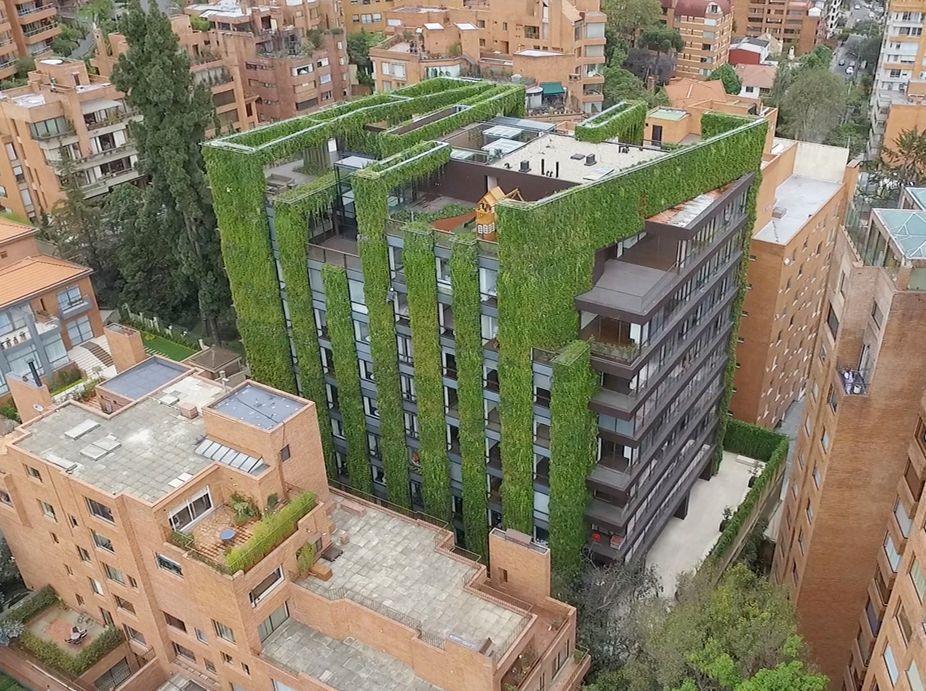

The largest vertical garden in the world looks like a living, breathing green giant in Bogotá, Colombia’s densely populated capital.
The Santalaia building, erected by biologist and botanist Ignacio Solano with vertical garden and green roof firm Groncol, gives much-needed greenery to the sprawling city.
Located in the Rosales barrio, the multi-family residential building features of 3,117 square meters (33,551 square feet) of plants. The building is nine stories above ground and two stories underground and was completed in December 2015 after 16 months of planning and construction.
About 115,000 plants of 10 different species were incorporated in the project, which Groncol says helps reduce urban heat island effect and produces oxygen for 3,000 people yearly .
“The architect’s intent was to produce a uniform green layer with real plants,” said Pablo Atuesta, general manager of Groncol. “He would have preferred to have only one species, but since it was too risky, we built several prototypes with different plants that would give us a uniform green tone and plant volume.
“The building should enhance the comfort and well being of its inhabitants, and the designer wanted the sensation of being surrounded by plants so as not to feel as though you were living in a dense urban environment like the one we have in Bogotá,” Atuesta added.
The lucky family living in one of the penthouses even has a private rooftop garden and playground.
A specially designed hydroponic irrigation system hydrates the massive vertical garden that consists of plants such as dwarf Hebe, asparagus fern, rosemary, vincas and spathiphyllum flowering plants, among others.
“Designing irrigation, water recycling systems, as well as plant selection were some of the biggest challenges with the Santalaia project. The Santalaia building is also using water from the apartments’ showers for irrigation,” Atuesta said. “Among many technical details, we installed humidity and radiation sensors to optimize water consumption as well as a water treatment plant so as not to have any water waste.”
Take a tour of the lush green building:

 233k
233k  41k
41k  Subscribe
Subscribe 